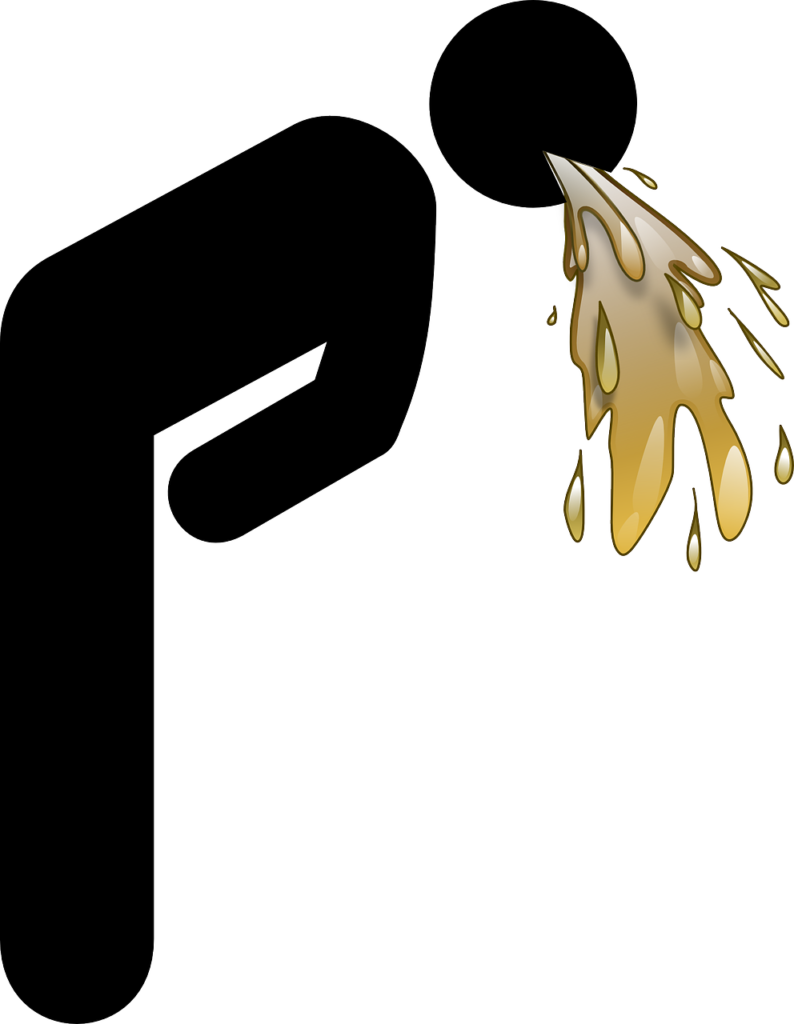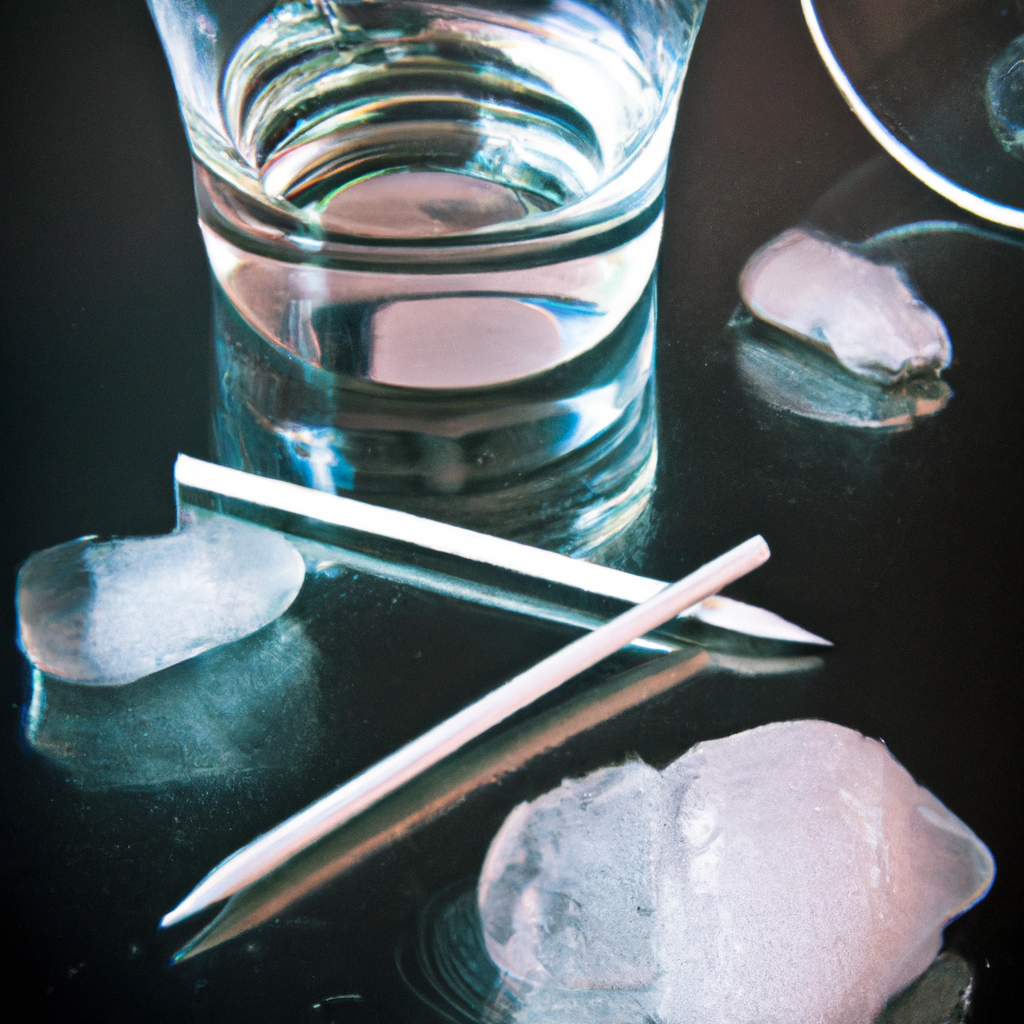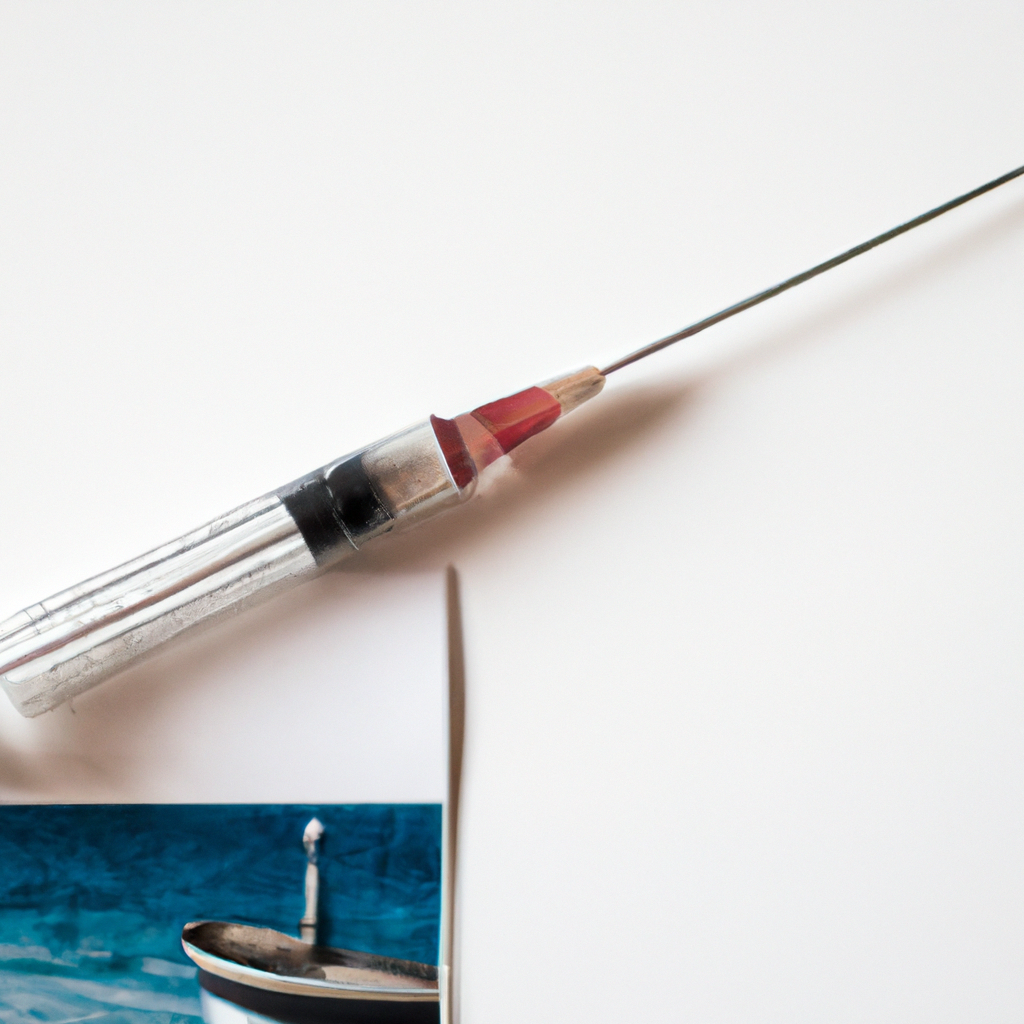
Are you worried about getting seasick on your upcoming cruise? Many people share this concern, wondering if their dream vacation will be ruined by motion sickness. Whether you are a first-time cruiser or a seasoned traveler, this article will provide you with valuable insights and tips on how to prevent and manage seasickness, ensuring a smooth sailing experience for you. So sit back, relax, and let us put your worries at ease as we navigate through the world of seasickness.
Factors that contribute to seasickness
Motion of the boat
The motion of the boat is one of the primary factors that contribute to seasickness. The constant rocking, swaying, and tilting motions can disrupt the sense of balance in your inner ear, leading to nausea and dizziness.
Inner ear
The inner ear plays a crucial role in maintaining balance. When the motion of the boat contradicts the signals received by the inner ear, it can cause confusion and seasickness. The inner ear helps us detect changes in motion and position, so any discrepancies can result in discomfort.
Visual cues
Visual cues can also play a significant role in seasickness. When your eyes see the boat moving while your body feels stationary, it can create a conflict between what you see and what you sense, leading to feelings of nausea.
Focus
Focusing on stationary objects like books or gadgets can exacerbate seasickness symptoms. When you try to concentrate on something without considering the boat’s motion, the contradiction between your inner ear and visual cues intensifies, making you feel unwell.
Body position
Your body position on the boat can contribute to seasickness. Being below deck or in the middle of the boat, where the motion is more pronounced, increases the chances of experiencing seasickness. Additionally, lying down or sitting in a slouched position can also worsen symptoms.
Lack of fresh air
A lack of fresh air can make seasickness worse. The stale, confined air below deck can cause stuffiness and exacerbate feelings of nausea. Being in an open area with fresh air can help alleviate these symptoms.
Sleep deprivation
Lack of sleep can make you more susceptible to experiencing seasickness. When you are tired, your body is already struggling to maintain balance, and the added motion of the boat can further disrupt your equilibrium, increasing the likelihood of seasickness.
Food and drink
Consuming heavy or greasy meals before or during your time on the boat can increase the chances of seasickness. These types of foods take longer to digest and can make you feel more uncomfortable when combined with the motion of the boat. It is best to opt for light, easily digestible meals.
Anxiety and stress
Anxiety and stress can also contribute to seasickness. When you are anxious or stressed, your body produces more adrenaline, which can affect your sense of balance and make you more susceptible to motion sickness. Keeping calm and minimizing stress can help reduce the likelihood of experiencing seasickness.
Previous history of motion sickness
If you have previously experienced motion sickness, whether on a boat or other modes of transportation, you may be more prone to seasickness. Your body may have a heightened sensitivity to motion, making it easier for you to feel unwell on a boat. It is essential to be aware of your previous experiences and take appropriate measures to prevent seasickness.
Preventing seasickness
Choose the right boat
Choosing the right boat can significantly impact your chances of experiencing seasickness. Opt for a larger, more stable vessel that is equipped with stabilizers to minimize excessive motion. Research the boat’s stability and consider taking shorter trips initially to gauge your tolerance before embarking on longer journeys.
Choose the right seat
Where you sit on the boat can make a difference in your susceptibility to seasickness. If possible, choose a seat near the center of the boat, as the motion is less pronounced in this area. Additionally, sitting facing forward can help synchronize the motion your body feels with what your eyes see, reducing the likelihood of seasickness.
Fix your gaze
To minimize conflicting sensory signals, fix your gaze on a stable point on the horizon. Looking at a stationary object in the distance helps your brain register a consistent reference point, reducing the confusion caused by the boat’s motion.
Find fresh air
Seeking fresh air can alleviate symptoms of seasickness. Spending time on deck or in areas with good ventilation can provide a refreshing change and help reduce feelings of nausea. If possible, position yourself in a spot where you can feel the breeze and avoid the stuffiness below deck.
Eat light meals
Choosing light, easily digestible meals before and during your time on the boat can help prevent seasickness. Avoid heavy, greasy foods that can make you feel more uncomfortable. Opt for small, frequent meals rather than large portions to keep your stomach settled.
Stay hydrated
Staying hydrated is essential to prevent seasickness. Dehydration can exacerbate symptoms, so be sure to drink plenty of water throughout your time on the boat. Avoid alcohol and caffeinated beverages, as they can dehydrate you and increase the likelihood of feeling unwell.
Avoid alcohol and caffeine
Alcohol and caffeine can both worsen seasickness symptoms. Alcohol can dehydrate you and affect your balance, making you more susceptible to motion sickness. Caffeine, on the other hand, can stimulate your nervous system and increase feelings of nausea. It’s best to avoid both substances when on a boat.
Control your anxiety
Minimizing anxiety can help prevent seasickness. Engaging in relaxation techniques, such as deep breathing or meditation, can help calm your mind and reduce stress. Familiarize yourself with the safety procedures and precautions on the boat to alleviate any anxiety you may have about being at sea.

Medications and remedies for seasickness
Over-the-counter medications
Over-the-counter medications such as dimenhydrinate (Dramamine) or meclizine (Bonine) can be effective in preventing seasickness. These medications work by blocking the signals in your brain that trigger nausea and dizziness. It is important to follow the recommended dosage and consult with a healthcare professional before taking any medication.
Prescription medications
For individuals prone to severe seasickness, prescription medications such as scopolamine patches may be recommended. These patches release medication through the skin and can provide relief for several days. However, they can have side effects such as dry mouth and drowsiness, so it is crucial to consult with a doctor before using them.
Natural remedies
Natural remedies can also help alleviate seasickness symptoms. Ginger, in various forms such as capsules, tea, or candies, has been found to have anti-nausea properties. Peppermint can also aid in relieving feelings of nausea. These remedies can be particularly useful for those who prefer a more natural approach or for individuals who cannot tolerate medication.
Alternative therapies
Certain alternative therapies, such as acupuncture or acupressure, may also offer relief from seasickness. Acupuncture involves the insertion of fine needles into specific points on the body, while acupressure involves applying pressure to these points. These therapies aim to rebalance the body’s energy flow and can provide relief from symptoms.
Acclimatization techniques
Gradual exposure
Gradually exposing yourself to the motion of the boat can help your body acclimate to the sensations and reduce the likelihood of experiencing seasickness. Start with shorter trips and gradually increase the duration and intensity of your time at sea. By giving your body time to adjust, you can build up tolerance and reduce the chances of feeling unwell.
Visualize calmness
Visualizing a calm environment can help reduce anxiety and lessen the impact of motion sickness. Close your eyes and imagine yourself in a peaceful, stable place while on the boat. By focusing on relaxation and tranquility, you can distract your mind from the motion and alleviate symptoms.
Breathing exercises
Engaging in deep breathing exercises can help regulate your body’s response to stress and motion. Take slow, deep breaths, inhaling through your nose and exhaling through your mouth. By focusing on your breath, you can create a sense of calm and reduce the likelihood of experiencing seasickness.
Relaxation techniques
Practicing relaxation techniques, such as progressive muscle relaxation or guided imagery, can help relax your body and mind. These techniques involve systematically tensing and then releasing different muscle groups or visualizing calming scenarios. By promoting relaxation, you can reduce stress levels and minimize the impact of motion sickness.

Home remedies for seasickness
Ginger
Ginger has long been used as a natural remedy for seasickness. It contains compounds that can help alleviate feelings of nausea and reduce the occurrence of vomiting. Ginger can be consumed in various forms, such as ginger tea, ginger capsules, or ginger candies, and is widely available in health food stores or supermarkets.
Peppermint
Peppermint is another home remedy that can provide relief from seasickness symptoms. Its soothing properties can help calm the stomach and relieve nausea. Peppermint tea or peppermint essential oil can be effective options for reducing the discomfort associated with motion sickness.
Acupressure
Acupressure is a technique that involves applying pressure to specific points on the body to alleviate symptoms. The P6 acupressure point, also known as the Nei Guan point, is often targeted for relieving nausea and is located on the inner side of the wrist. Acupressure bands that apply constant pressure to this point can be worn on the wrist to help prevent seasickness.
Essential oils
Certain essential oils, such as lavender or lemon, have calming properties that can help ease nausea and promote relaxation. These oils can be used in a diffuser or applied topically, diluted with a carrier oil, to the temples or wrists. However, it is important to ensure that you are not sensitive or allergic to any essential oils before using them.
Tips for coping with seasickness
Stay on deck
Whenever possible, stay on deck rather than being below deck. Being in an open area allows for better ventilation and access to fresh air, which can alleviate symptoms of seasickness. Additionally, keeping your eyes on the horizon and having a clear view of your surroundings can help your brain better process the boat’s motion.
Focus on the horizon
Fix your gaze on the horizon or a distant, stationary object. This can help provide a stable reference point for your brain and reduce the conflicting signals between your inner ear and visual cues. By concentrating on a fixed point, you can minimize the disorientation that leads to seasickness.
Avoid heavy meals
Avoid consuming heavy or greasy meals before and during your time at sea. These types of foods can make you feel more uncomfortable and increase the chances of experiencing seasickness. Opt for light, easily digestible meals and eat small portions to prevent overeating.
Avoid strong smells
Strong smells, such as those from cooking or fuel, can trigger nausea and worsen seasickness symptoms. If possible, stay away from areas with strong odors or ask to be seated or positioned in an area with better air circulation. Minimizing exposure to strong smells can help reduce feelings of discomfort.
Stay hydrated
Drinking plenty of water is essential to prevent dehydration, which can exacerbate seasickness. Stay hydrated throughout your time on the boat by drinking water regularly. Avoid excessive consumption of alcohol or caffeinated beverages, as they can dehydrate you and increase the likelihood of feeling unwell.
Take breaks and rest
Taking breaks and resting can provide relief from seasickness. If you start to feel unwell, find a calm area to sit or lie down and relax. Close your eyes and engage in deep breathing or relaxation techniques. Taking short, frequent breaks can help restore your equilibrium and reduce the severity of symptoms.
Avoid excessive movement
Excessive movement, such as walking or trying to engage in activities that require balance, can worsen seasickness. If you start to feel unwell, try to minimize unnecessary movements and focus on maintaining a stable position. Moving slowly and purposefully can help alleviate the sensations of dizziness and nausea.
Try distracting activities
Engaging in distracting activities can help take your mind off the boat’s motion and alleviate seasickness symptoms. Listening to music, reading a book, or engaging in light conversation can redirect your attention and reduce feelings of discomfort. Find an activity that helps you relax and enjoy your time at sea.

What to do if you get seasick
Inform the crew
If you start to feel seasick, it is important to inform the crew or a responsible individual on the boat. They can provide assistance, offer guidance, or direct you to appropriate areas where you can find relief. Seek their advice on preventive measures or remedies that may help alleviate your symptoms.
Move to a stable spot
If possible, move to a stable spot on the boat. Making your way to the center of the boat or to an area with less motion can help reduce the severity of seasickness symptoms. Be attentive to your body’s signals and find a position that feels most comfortable and stable.
Keep your eyes on the horizon
Maintaining your focus on the horizon can help reestablish a sense of balance and reduce the disorientation caused by seasickness. Fix your gaze on a stable point and try to minimize visual distractions. By keeping your eyes on the horizon, you can realign your inner ear and visual cues, providing relief from nausea.
Use acupressure bands
Acupressure bands can be worn on the wrists to apply continuous pressure to the P6 acupressure point, which is known to alleviate nausea. These bands are readily available in pharmacies or online stores and can offer relief from seasickness symptoms. Follow the instructions provided to ensure proper use.
Try ginger or peppermint
Both ginger and peppermint have been traditionally used as natural remedies for nausea and can be helpful in relieving seasickness symptoms. Ginger can be consumed in various forms, such as ginger tea or capsules, while peppermint can be taken as tea or in the form of candies. Experiment with these remedies to find what works best for you.
Take deep breaths
Deep breathing exercises can help relax your body and alleviate seasickness symptoms. Inhale slowly through your nose, counting to four, and exhale through your mouth, counting to six. Focus on your breath and allow it to guide you into a state of calmness. Deep breaths can help regulate your body’s response to stress and motion.
Stay hydrated
Staying hydrated is crucial, even if you are feeling unwell. Sip on water regularly to prevent dehydration, which can worsen seasickness symptoms. Small, frequent sips can be more manageable if you are experiencing nausea. If you are unable to hold down water, seek medical assistance onboard.
Rest in a calm area
If possible, find a calm area where you can rest and allow your body to recover. Lie down or sit in a comfortable position, close your eyes, and engage in relaxation techniques. Resting in a quiet, soothing environment can help reduce the severity of seasickness symptoms and promote a sense of well-being.
Consider medications
If your seasickness symptoms are severe or persistent, consider consulting with a healthcare professional about medication options. There are prescription medications available that can help alleviate symptoms. However, it is essential to follow the recommended dosages and consult with a healthcare professional before taking any medication.
Seasickness in children
Causes of seasickness in children
Children can experience seasickness for similar reasons as adults. Their inner ears and developing sensory systems may be more sensitive to changes in motion, making them more susceptible to seasickness. Additionally, anxiety or fear related to being on a boat can contribute to their symptoms.
Preventing seasickness in children
To prevent seasickness in children, it is important to choose the right boat and seat. Opt for larger, more stable vessels and seats near the center of the boat, where the motion is less pronounced. Encourage your child to focus on the horizon and engage in distracting activities to redirect their attention.
Natural remedies for children
Natural remedies such as ginger or peppermint can be safe and effective options for children. Ginger candies or ginger ale can be offered to alleviate nausea, while peppermint candies or tea can help calm the stomach. It is crucial to ensure that the remedies are age-appropriate and properly dosed.
Medications for children
If necessary, consult with a pediatrician about the use of over-the-counter or prescription medications for your child. Some over-the-counter medications may be safe for children, but it is essential to follow the recommended dosage and seek professional advice. Prescription medications may be considered for severe cases, but their use should be carefully monitored.

Seasickness myths debunked
Seasickness is psychological
While anxiety and stress can contribute to seasickness symptoms, seasickness itself is not purely psychological. It is a physiological response to conflicting signals received by the inner ear and the brain. The motion of the boat disrupts the sense of balance, causing feelings of nausea and dizziness.
Only weak people get seasick
Seasickness can affect anyone, regardless of their physical or mental strength. It is not a reflection of weakness or character. The susceptibility to seasickness can vary from person to person based on factors such as their inner ear sensitivity or previous experiences with motion sickness.
Seasickness goes away after a few days
Seasickness symptoms typically subside once an individual becomes acclimated to the motion of the boat. However, for some individuals, symptoms may persist throughout their entire time at sea. It is important to take preventive measures and explore remedies and techniques to alleviate discomfort.
Seasickness is contagious
Seasickness is not contagious. It cannot be transmitted from one person to another through physical contact or close proximity. However, witnessing others experiencing symptoms of seasickness can induce feelings of queasiness or nausea in some people due to the power of suggestion.
Conclusion
Understanding seasickness and its contributing factors is essential for preventing and managing this common condition. By choosing the right boat, seat, and taking preventive measures, you can significantly reduce the likelihood of experiencing seasickness. Exploring medications, natural remedies, and acclimatization techniques can provide additional support. Remember to stay hydrated, find fresh air, and take breaks when needed. By implementing these strategies, you can enjoy your time at sea without the discomfort of seasickness.




